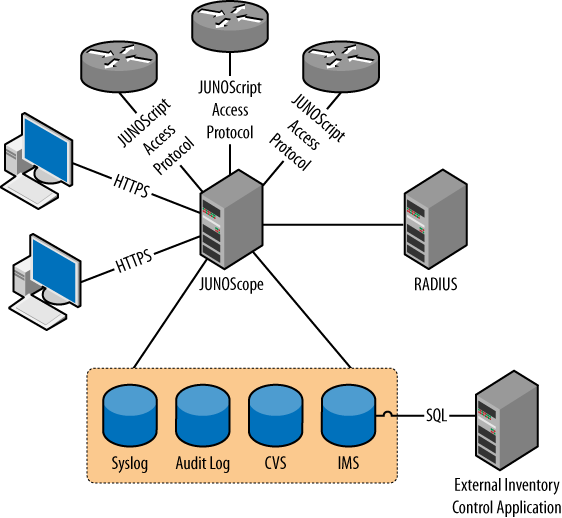JUNOScope
Though individual devices in the network can be configured with J-Web for individual management, if you’re managing an entire network of routers, use of the web-driven JUNOScope provides a GUI-based tool for collecting and analyzing the information necessary to maintain network high availability. JUNOScope provides access to tools that allow you to monitor information such as system capacity and usage, routing protocols, and interface throughput.
Overview
At the heart of the JUNOScope software are the web-based management functions provided from a Unix/Linux-based server. Using a combination of Perl, Extensible Markup Language (XML), and JUNOScript, the web server interacts with the networking equipment through the use of the APIs built into JUNOS. The JUNOScope server can also interact with remote application servers through standardized communication protocols, such as syslog, Remote Authentication Dial-in User Service (RADIUS), and SQL. Figure 11-1 shows an example of the JUNOScope server in a network and its interactions with network devices.

Figure 11-1. JUNOScope network architecture
In Figure 11-1, the JUNOScope server is the hub of the network management architecture, and provides information to the clients through standard web protocols. The JUNOScope server interacts securely with the networking equipment, running JUNOS via the JUNOScript access protocol. Within the ...
Get JUNOS High Availability now with the O’Reilly learning platform.
O’Reilly members experience books, live events, courses curated by job role, and more from O’Reilly and nearly 200 top publishers.

